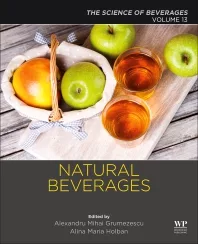Fortification ingredients get condition-specific
Vitamins, minerals address consumers' functional needs
The existence of daily, weekly, monthly and even fashionable pill-organizing containers is enough to prove that taking multiple pills a day has become routine for many consumers. This idea runs parallel with consumers taking a more active role in their health issues and seeking products that will help them to continue to do so, says Russ Hazen, raw materials and innovations specialist at Fortitech, a Schenectady, N.Y.-based division of DSM. However, consuming supplements in pill form isn’t always easy or enjoyable because they can be difficult to swallow and/or have an unpleasant taste. Therefore, consumers might turn to beverage options as an easier delivery system for the nutrients they desire, he says.
And as beverages and supplements continue to blur the lines, beverage fortification will grow, affirms Kathy Lund, vice president of business development and marketing for AIDP Inc., City of Industry, Calif. Several population groups already prefer liquid formats when seeking vitamin and mineral supplementation, she notes.
Consumers also are moving toward fortified beverages and other over-the-counter solutions as alternatives to medicinal products, Fortitech’s Hazen says. “If they feel that they can obtain a health benefit without going through the standard medical route, they will try it,” he says.
By fortifying beverages with vitamins and minerals, these products can assist with a range of health issues, such as cognitive function, bone health, blood sugar management and energy, experts say.
Cognitive function
For instance, Fortitech offers choline, an essential nutrient in the B-vitamin family, which can enhance cognitive function, Hazen says. Along those lines, AIDP Inc. offers a form of magnesium that can aid in brain function. Magnesium typically is found in leafy green vegetables, but it is estimated that more than half of the U.S. population is deficient in magnesium, Lund says. AIDP’s Magtein is a patented form of magnesium that can effectively cross the blood-brain barrier, Lund says.
“It increases brain synaptic density by rejuvenating neural cells,” she explains. “Four published research studies in prestigious journals demonstrated Magtein’s ability to improve short-term and long-term memory, recognition and learning.” Magtein also has been proven to help alleviate anxiety and phobias as well as improve and reverse the effects of Alzheimer’s in animal models, Lund adds.
Magtein is highly soluble and self-affirmed generally recognized as safe (GRAS) and features a clean taste with no odor, she says.
Bone health
Additionally, minerals like magnesium, calcium and phosphorous as well as vitamins D and K can aid in bone and joint health, Fortitech’s Hazen adds. Ingredion Inc. offers an algae-derived multi-mineral ingredient called Aquamin that functions like calcium but is easier to formulate within beverages, says Patrick Luchsinger, marketing manager of nutrition for the Westchester, Ill.-based company. Containing calcium, magnesium and other trace minerals including zinc, iron and selenium, Aquamin showcases organoleptic properties, meaning that it has a non-chalky, non-gritty mouthfeel and leaves a clean end-taste for the product, he says.
“Most calcium ingredients are just mined calcium from stone, so they can be very chalky and astringent, and formulators have to take that into consideration when they are formulating a beverage,” Luchsinger says. “With Aquamin, it has a different source, being plant-based, and a different processing method, which adds to the fact that it has very good mouthfeel properties, it doesn’t affect the taste that much of the end product, and it’s easier to formulate with.”
The ingredient is available in four different forms, two of which are most applicable for beverages. Aquamin S is an acid-reacted grade of Aquamin that is suitable for low-pH beverages that do not require clarity, such as juices, smoothies and dairy drinks, whereas Aquamin Soluble was developed specifically for applications that require clarity.
Although calcium fortification might be most important to baby boomers and seniors, it’s also on the minds of people across younger generations, Luchsinger notes. According to a recent study by the Natural Marketing Institute (NMI), bone health and calcium supplementation are concerns across generations, but these concerns increase as consumers age, he says.
Fat-soluble solutions
In relation to calcium, vitamins K and D are up-and-coming ingredients, says Jeremy Bartos, senior innovation scientist with Glanbia Nutritionals, Carlsbad, Calif. Vitamin K2, in particular, is becoming more popular in the United States, he notes. The vitamin removes calcium from the circulatory system and helps deposit it in the bone, thereby aiding heart health by reducing the risk of atherosclerosis, he explains. It also reduces the risk of osteoporosis by depositing calcium where the body needs it, he adds. Vitamin D, on the other hand, promotes calcium absorption and maintains appropriate amounts of calcium and phosphate to enable normal mineralization of bone, according to the National Institutes of Health’s Office of Dietary Supplements. It also is a “sunshine vitamin,” which means that the human body produces vitamin D in response to sunlight, Bartos says. Those not exposed to sunlight often enough, however, are prone to vitamin D deficiency. Therefore, milk often is fortified with vitamin D, he says.
Because both vitamins K2 and D are fat-soluble, formulation in dairy applications is ideal. However, if they are being incorporated into a water-based beverage, they will require some conditioning, such as the addition of an emulsifier, to enable the vitamins to become suspended in water, Bartos explains.
Along these lines, AIDP Inc. offers its enVantec line of fat-soluble vitamins manufactured with a proprietary microencapsulation technology that does not use gelatin, preservatives or added antioxidants and is ideal for functional beverages and liquid nutraceuticals, Lund says. The technology provides small particles for greater stability and solubility, she adds.
“Beverage processing uses high heat, which often creates instability for vitamins,” she explains. “Also, vitamins can make a clear beverage cloudy. AIDP’s enVantec line of vitamins eliminates these processing challenges while giving manufacturers a clean label solution.”
Earlier this year, Glanbia also developed a way to protect vitamins and minerals through its Nutra-Shield microencapsulation technology. By encapsulating vitamins, the technology protects the ingredients from the elements as well as other beverage ingredients that could damage or degrade them, Bartos says. The technology also masks unpleasant off-notes and improves the shelf life of the vitamins, he adds.
Recent advances in nanotechnology also have enabled the development of new emulsion systems that can better incorporate fat-soluble vitamins into clear beverages, Fortitech’s Hazen notes.
“As technology continues to advance the options for market forms, we are seeing a dramatic increase in the number of fortified products on the market,” he says. As a result, demand for premixes has risen, he adds.
“We have seen an increase in requests for all-in-one beverage mixes that incorporate nutrients, stabilizers, sweeteners, natural flavors and natural colors,” Hazen says. “These seem to resonate with consumers because they can easily be mixed into a bottle of water for on-the-go nutrition and are easily incorporated into their current dietary regime.”
Meal-replacement drinks also are ideal for vitamin and mineral fortification, says Elsie Jamin-Maguire, business manager for beverages at BASF Nutrition & Health, Florham Park, N.J. Consumer demand for convenient nutrition is driving $3.1 billion in retail sales of meal-replacement beverages, she adds.
Blood sugar management
On the mineral side of fortification, the trace mineral chromium is growing in popularity, Glanbia’s Bartos says. Considering the epidemic of diabetes in the United States, chromium’s role in decreasing blood sugar levels and aiding in weight loss helps to address this major health issue.
“Chromium is a co-factor for insulin,” Bartos explains. “Insulin is a hormone that in essence acts as a shuttle. Whenever you take in a high-carbohydrate meal, a lot of glucose is released by … that blood sugar spike that triggers the body to release insulin. Insulin acts as a shuttle to take the sugar that’s being absorbed in the bloodstream and either take it to be used in the body somewhere as energy at the time or have it stored as fat for later fuel.”
However, insulin responds differently for people with diabetes. Either the body experiences insulin resistance or stops producing insulin altogether, Bartos says. As a co-factor for insulin, chromium helps overcome insulin resistance by increasing the body’s sensitivity to insulin. As a result, blood sugar levels decrease and weight is reduced, he says.
Additionally, new research shows that chromium increases glucose transport in the brain, which also increases brain activity, Bartos says.
However, elemental chromium is not very bioavailable, which means it cannot be absorbed easily, he notes. Therefore, use of a more bioavailable version such as chromium picolinate will help with its efficacy by increasing the absorption of chromium into the body.
Energy boost
In addition to health issues, consumers often turn to beverages for an energy boost to get them through the day.
“Consumers are increasingly selecting beverages as a convenient delivery form for supplementing their health, and beverages are the go-to source for an energy boost,” BASF’s Jamin-Maguire says. “We are seeing booming demand for B vitamins, including B2, B5 and B12 for energy-drink-related applications.”
Retail sales of energy drinks, shots and mixes in the United States increased 16 percent from 2011 to 2012, reaching nearly $9.4 billion, and are forecasted to grow by 14 percent this year, she says.
This increase in demand for B vitamins might be related to consumers’ interest in natural energy, Glanbia’s Bartos suggests. In addition to vitamins B5 and B12, he notes that B3, also known as niacin, often is used. When a beverage contains niacin, it often causes consumers to feel flushed, which enables them to “feel it working,” he says.
Colorful carotenoids
Overall, consumers are interested in natural ingredients, he says. This carries over into colorings as well.
Carotenoids are colorful plant pigments that provide antioxidants and immune support, but some of them — such as beta-carotene and apocarotenal — also can turn into vitamin A in the body. BASF recently launched Apocarotenal 2 CWD as a bright and clear substitute for Yellow No. 6. The coloring is ideal for use in sports drinks, energy drinks, carbonated beverages, still beverages and liquid concentrates, Jamin-Maguire says.
“Beverage-makers are looking to carotenoids to create products without artificial colors but with the same clarity, stability, appearance, great taste and shelf-stability,” she says. “Carotenoids continue to show growth by replacing synthetic dyes in many food and beverage applications, fueled by consumer demand and government bans.”
Offering a variety of condition-specific functionalities, vitamins and minerals have the ability to answer many consumer needs. In the future, instead of cramming one more capsule into a pill-organizing container, consumers might be “drinking in” their supplements more often.
Looking for a reprint of this article?
From high-res PDFs to custom plaques, order your copy today!




